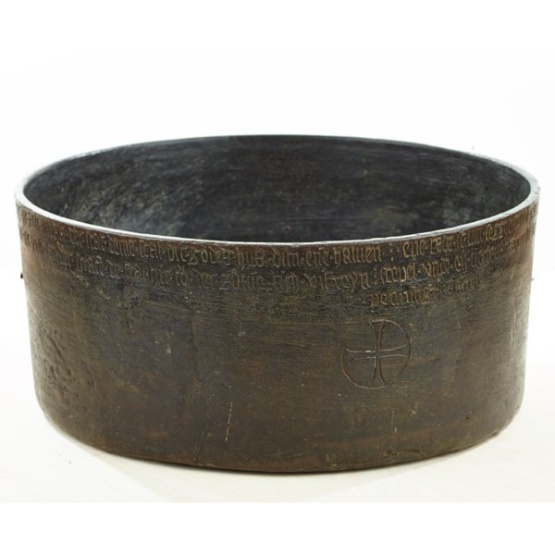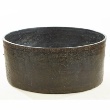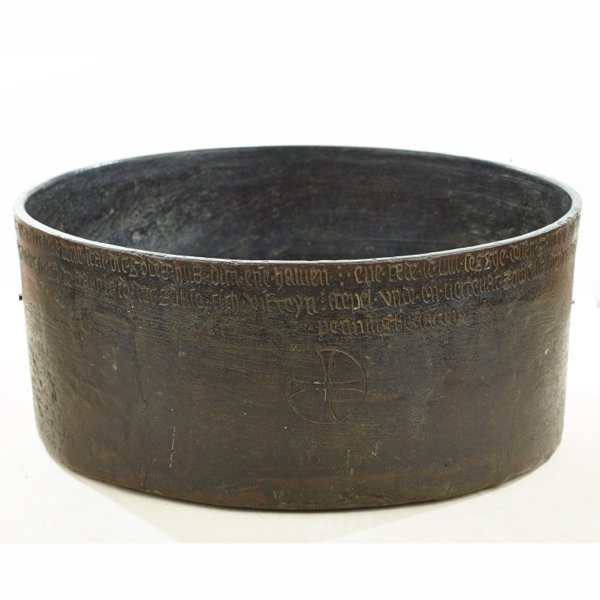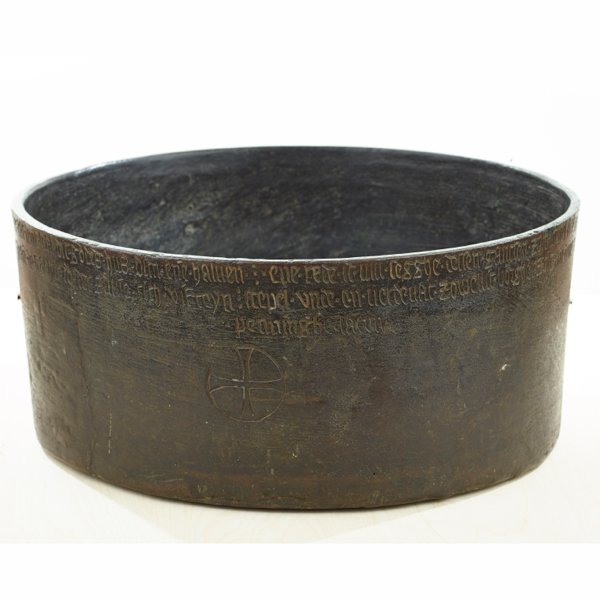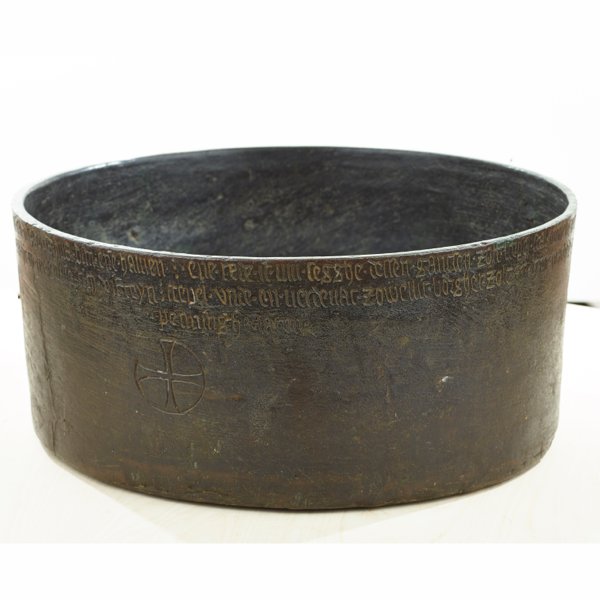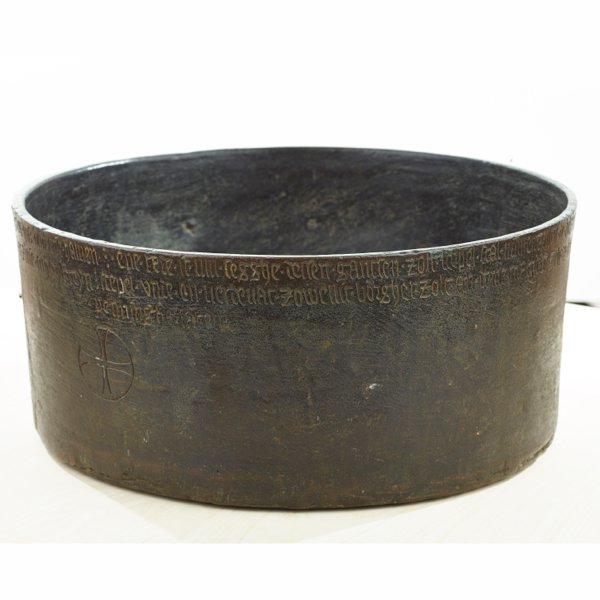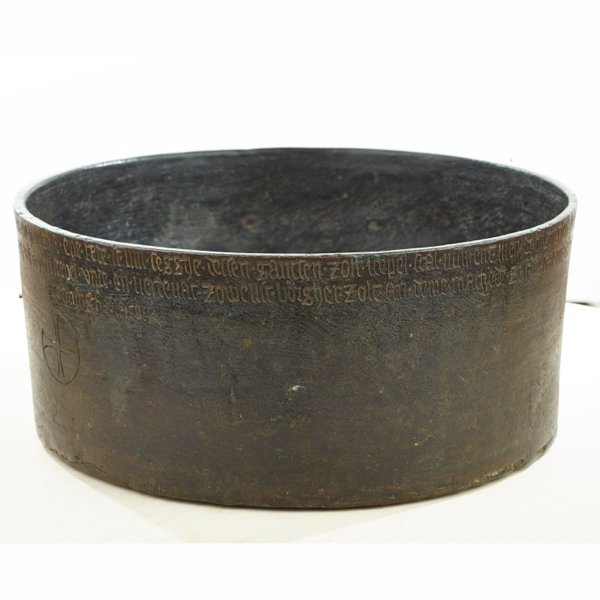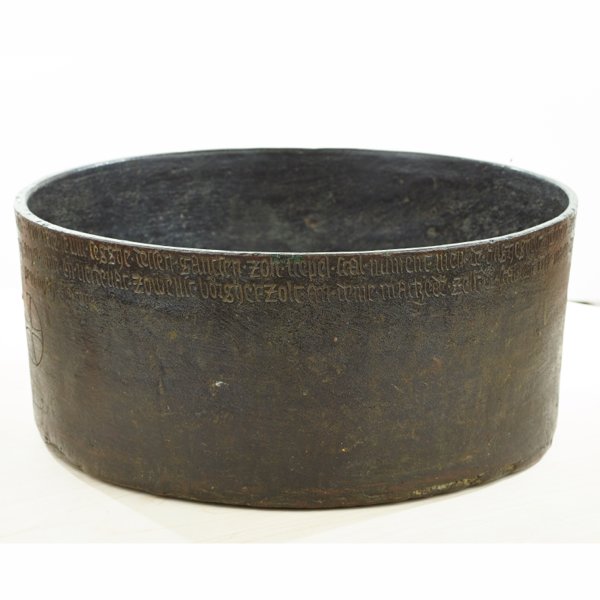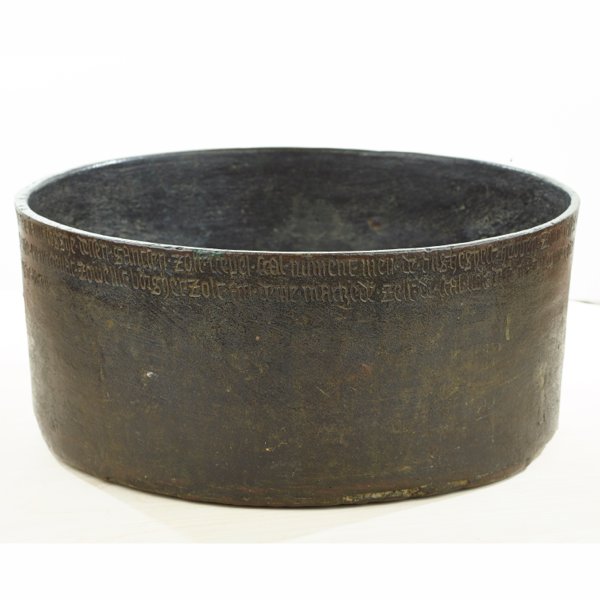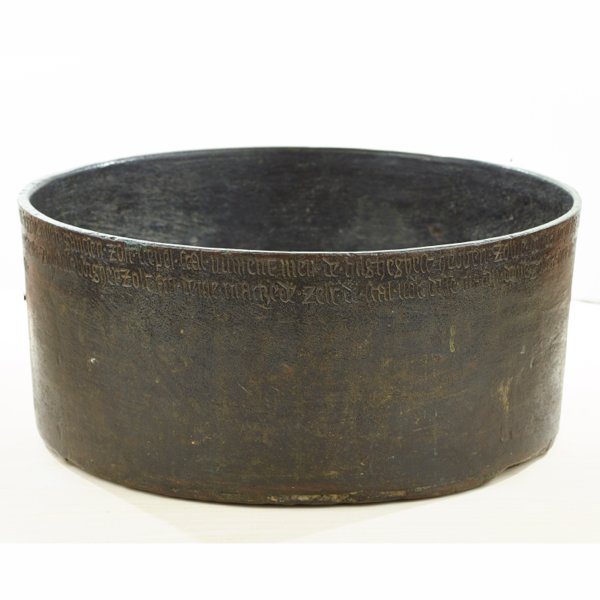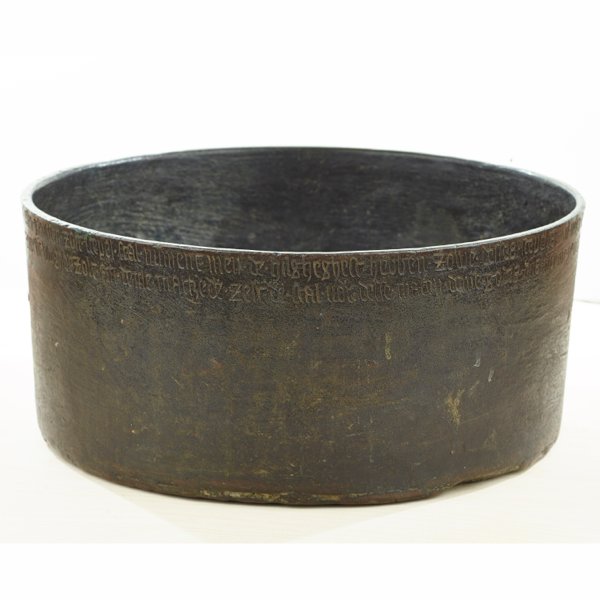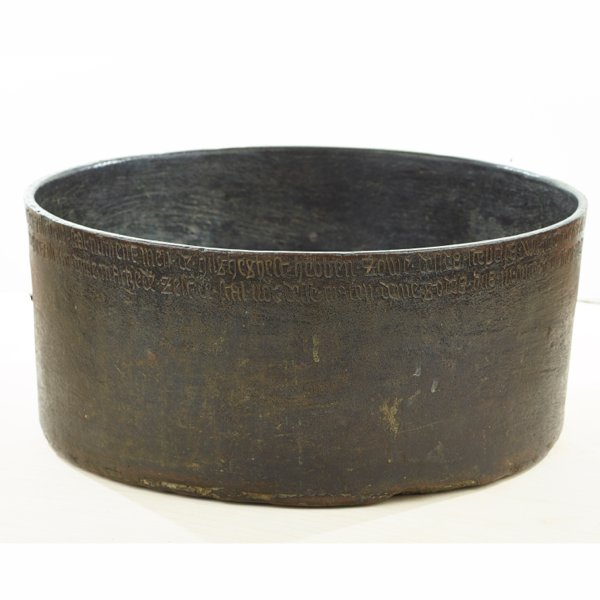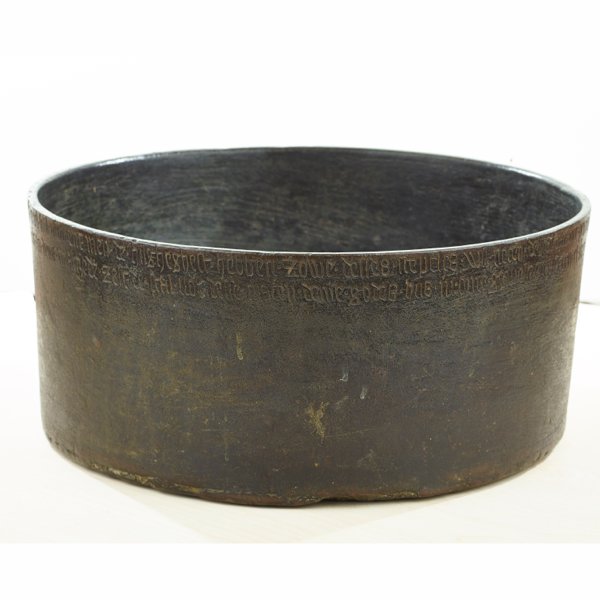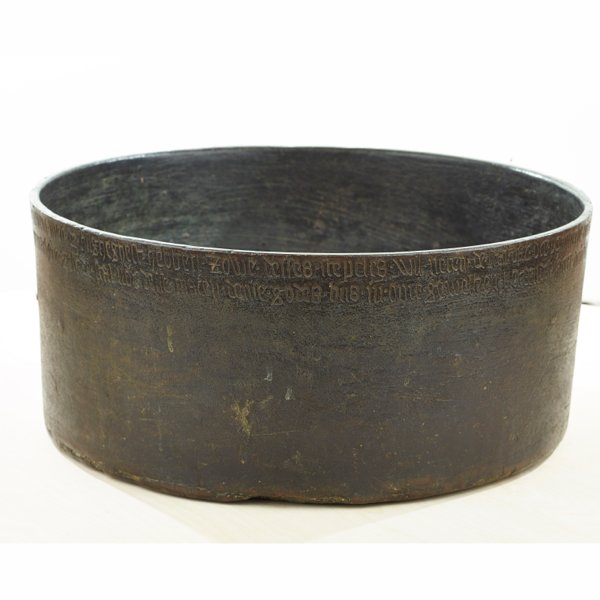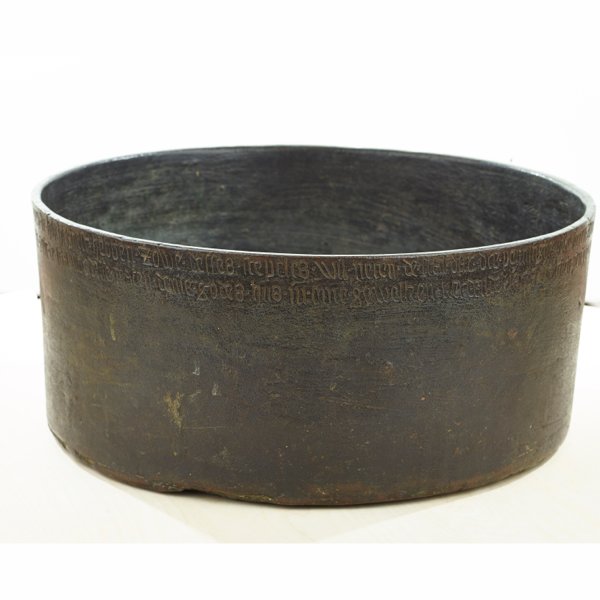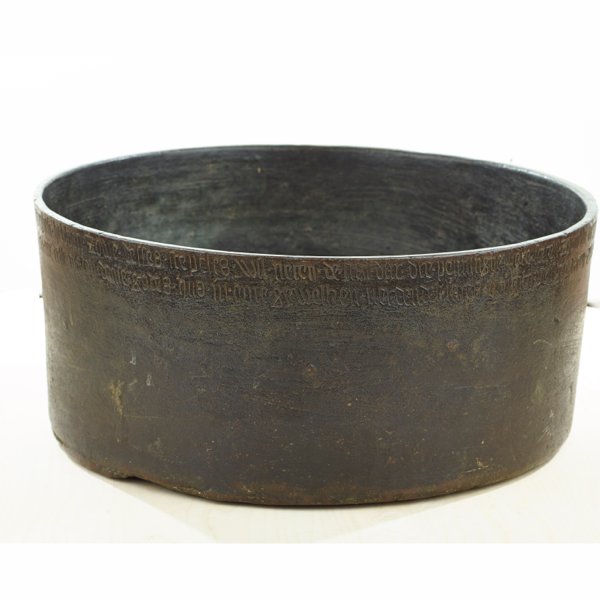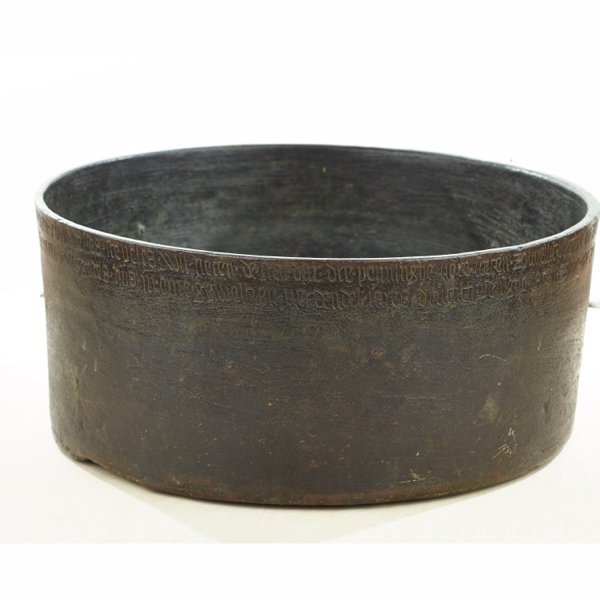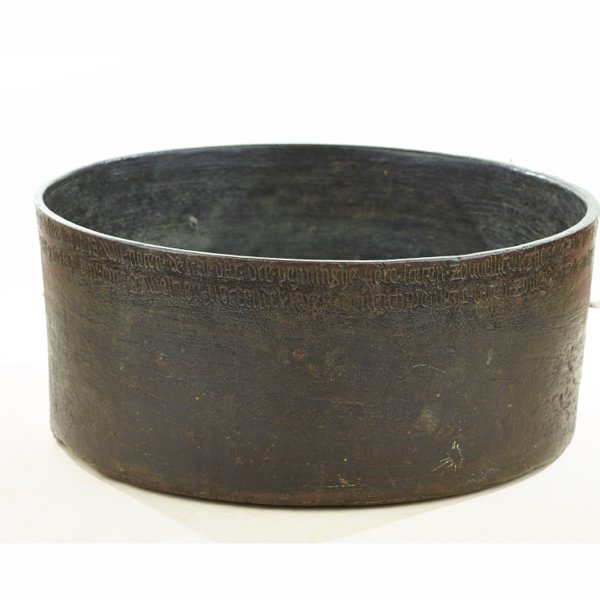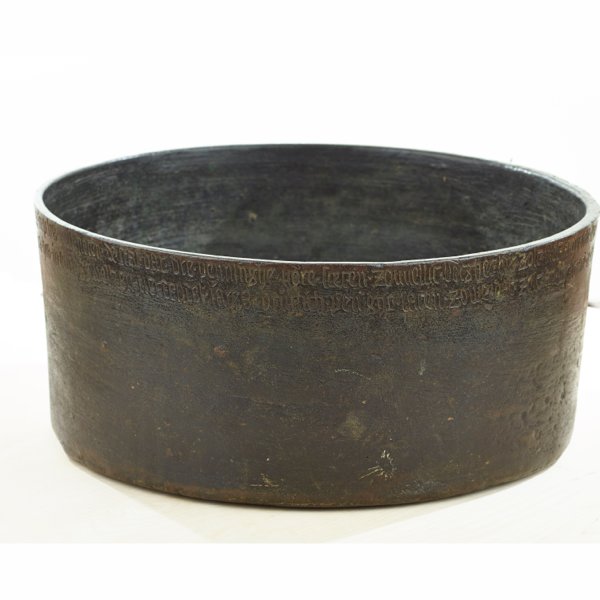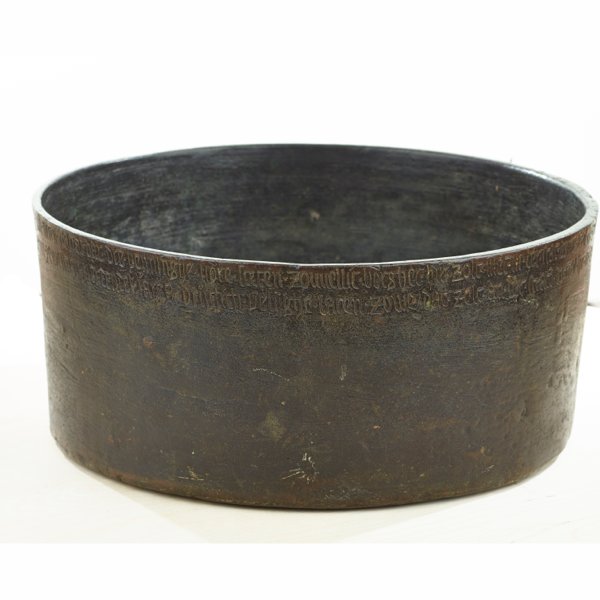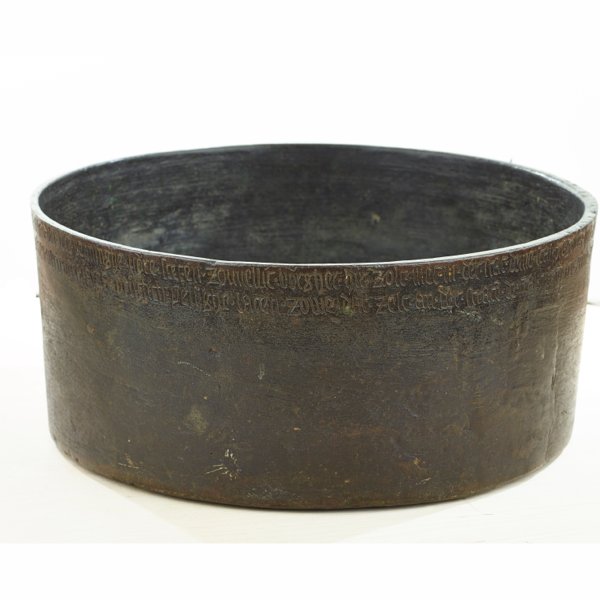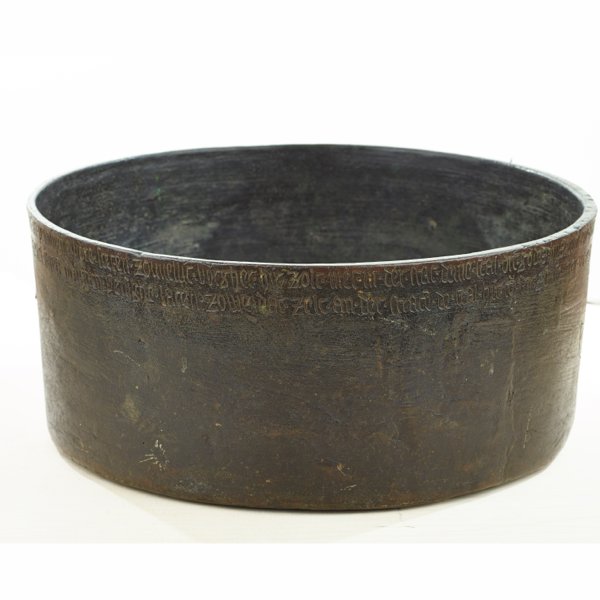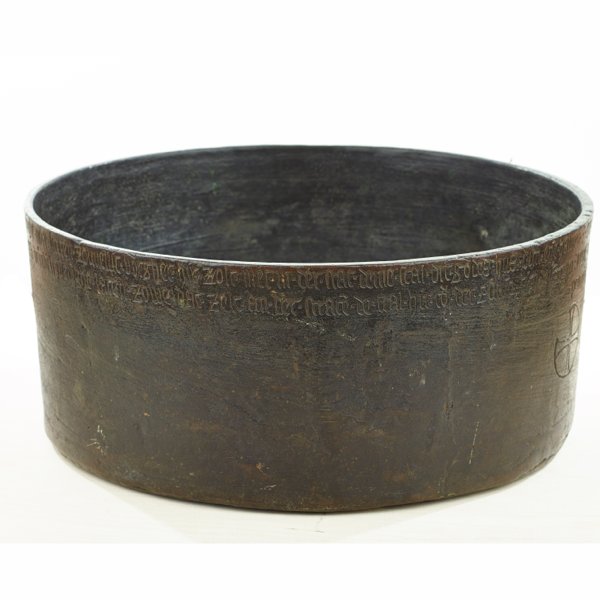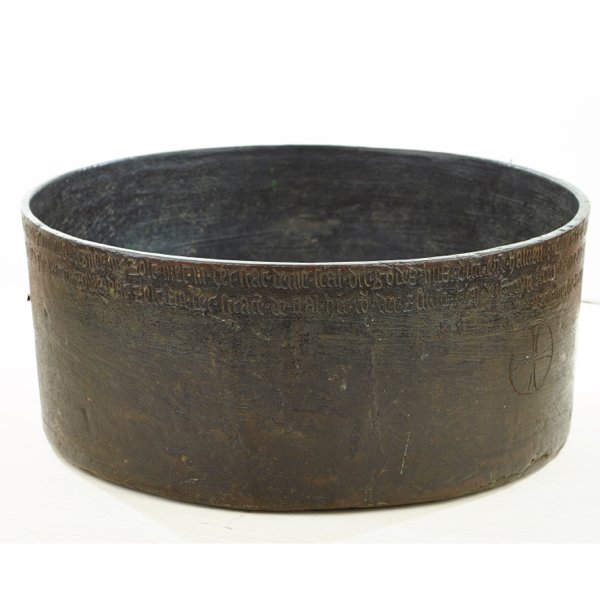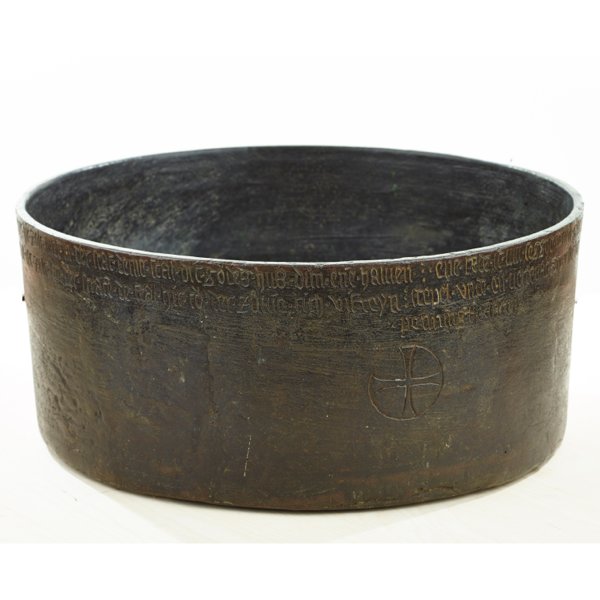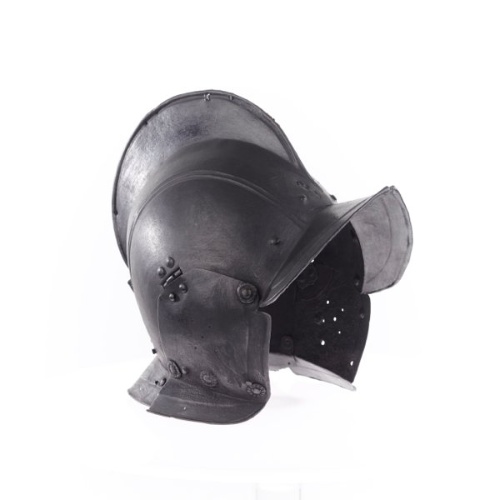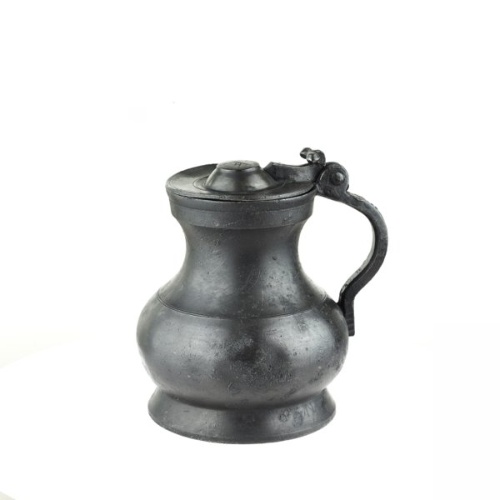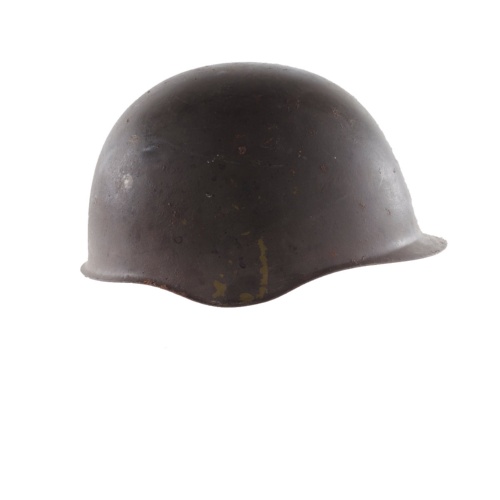Salt bushel
- Johannes Apengheter (ca. 1280–ca. 1352)
- bronze
- Rostock
- after 1330
The Rostock salt bushel is among the key documents to the Hanseatic history of measurements. The oversight of trades and markets was among the earliest competencies assigned to the city and the council. All measurements in the cities are standardised in order to protect buyers against fraud. Gauges are used to check the measurements. The salt bushel is one of the historical medieval measurements used in Rostock and stored in the Holy Spirit Hospital on Hopfenmarkt.
A salt and a hops bushel are preserved in addition to the corn bushels that indicate Rostock's significance in corn trading. The date of production and the name of the client are inscribed. The oat bushel shows the Mecklenburg bull's head, used at the time in Rostock's coat of arms. The council pays a monk at the hospital to calibrate all the bushels. A municipal officer - the Scheffelwröger - is entrusted with this task after the Reformation. The rye bushel remained in use until 1868.
Text: S. St.
